Traditionally, sugar confectionery's devotees have been the very young or the more senior members of society, with almost all households with children buying sweets for kids, and the older age group swelling in number. According to manufacturers, however, more of the rest of us could be munching it too.
Sugar products account for around a quarter of the confectionery market and growth/ decline estimates fall anywhere between -1% and 3%. Some sectors are buoyant though. The value of gums and jellies, for example, has grown around 10% in the last 12 months
All major manufacturers have been pointing to the category as one with growth potential. Sam McElligott, Mars' trade relations controller, says the company has been looking at investing in sugar confectionery during the last three years, following US trends and, according to the managing director of Germany based Haribo, Helmut Mager, manufacturers have been recognising the potential of what was previously a dormant market. "The past 12 to 18 months has seen a significant increase in npd and marketing support," he says.
Manufacturers have been been putting their money where the mouths are and marketing spend across the category is rising. Younger adults and teenagers are regarded as the major targets.
Children are still the major consumers of sugar confectionery but their consumption has been declining due to increasing competition from crisps and snacks and soft drinks. Innovation is crucial here.
Taste challenge continues to be a buzzword for kids. Nestlé Rowntree has introduced this year's most unusual flavours in Wonka Oompas, which it says is the first kids' confectionery product to include both sweet and savoury flavours.
Based on the Roald Dahl characters, these include mashed potato and caterpillar (cucumber) "wildcard" variants, along with jam doughnut, popcorn and rhubarb and custard.
Mars has run an on-pack competition to name a Starburst mystery chew flavour combination. Consumers who phone to enter chose from a list of options that included carrot and hamburger.
But innovation does not stop at taste. Kellogg's launched Winders in January strips of fruit confectionery wound in a comic strip-decorated wrapper. The brand, which, with a 50% fruit base, aims to appeal to mums as well as children, had sold 27 million units prior to its summer advertising campaign. UK sales director Stephen Twaddell predicted that the brand would be worth between £25m and £30m by the end of the year with a place among the top 10 sugar brands.
Kids also go for weird and wacky packaging.
Chupa Chups is a leader in formats designed to create a playground buzz. Summer lollipop packs have included sunglasses with an attachment for hands-free lollipop eating', similar to the hands-free microphones used by pop stars. A stationery tools kit and a mobile phone with a lollipop which pops up when the menu button is pressed were also launched.
Sour flavours, last year's new boys, have increased in number and this is stretching the category's appeal.
Chupa Chups has launched Super Sour flavour lollipops, while Leaf has added a Chewits X-treme sooper sour' Tutti Frutti flavour to appeal to tweenagers between eight and 12 years old '.
The sharper flavours "build playground credibility," according to Anne Allin, Leaf's marketing controller.
Mars has put Sourburst a sour flavours variant of its rising star brand Starburst into big bags.
Starburst and Skittles have given Mars a boost in this category. The company claims value growth of 22% and 17% for respectively.
Much of this has been due to the proliferation of brand extensions. McElligott says the five flavour Mints version, together with Sours, which both launched this year, have been "absolutely flying out the door".
Haribo's Mager says it is important that manufacturers realise consumers grow older with the brands. "Consumers who were three to 15 years old when we launched in the UK in 1995, have grown up with the brand and we want to offer them something," he says.
One offering this year has been Maoam Haribo's second biggest umbrella brand worldwide. The company has moved to establish it as a more grown-up' focused brand here.
Maoam Stripes' was the first launch and the company backed it with £1m its biggest marketing spend yet of TV and consumer press advertising and covermounts on youth titles.
Graham Walker, Nestlé Rowntree's sales communications manager agrees with Haribo. "Most fruity sugar products are aimed at children," he says. "There isn't a great deal available for teenagers and young adults."
The company's major initiative to plug the gap has been the launch of Megabeans. The company hopes that the longer lasting fruity jellybeans' bite', midnight blue metallic pack and funky ads will appeal to teenagers and young adults.
The ads play on the catchphrase Oingy Boingy which Nestlé hopes will become a regular part of teenage vernacular. "The ads in the press feature a bungee jumper," says Walker. "This instantly makes the point that the brand is exciting and not something just for little children."
Producing new formats for brands that are old favourites is one way to attract grown up' consumers into the category. Adams Confectionery has brought out the first extension to its Fruit-tella brand two sizes of jellies in foil sachets while Polo Smoothies now come in an impulse version of nine sweets in a small bag.
Health is also a focus for new brands aimed at adults, particularly women. Haribo has launched Peaches soft jellies, the first of a fat-free range. Fat-free pink and white marshmallows, Chamallows, follow in October 2001.
Mainstream advertising an area which previously seemed a bit too grown-up for sugar confectionery has benefited from all this activity. Mars has put £4.5m behind Starburst this year, with family-oriented ads, Skittles' £5m spend has included ads set in in a rainbow world and aimed squarely at young people.
The oldest TV debutante this season must surely have been Cadbury Trebor Bassett's Maynard's Wine Gums.
This brand took to screens in a spoof ad based on 1970s comedy series The Goodies and its theme tune renamed Goodie, Goodie Gum Gum.
New boys Oompas and Winders also had substantial marketing launchpads. Winders featured three brand characters relating to the three product flavours: Strawberry Sorbabe, Orange Blabber and Blackcurrant Booster, while Chewie the Chewitsaurus, Chewits dinosaur brand ambassador, starred in a £2m campaign.
Nestlé's Polo Smoothies welcomed a blackcurrant and cream flavour with a £2m tongue in cheek ad campaign entitled Hole Couture showing sweets as jewellery. The brand's arch rival Bendicks Campino also had a strong TV presence this year.
Activity in the hanging bags market is also indicative of increased focus on adults. Cadbury has relaunched its Bassetts variety range and has added Mint, Sweetshop and Fruit Favourites, along with a new bag of Maynard's Wine Gums.
Nestlé has overhauled its 10-strong hanging bags range, with a new 99p price point for sugar lines Wonka's Oompas, Rowntree's Fruit Pastilles, Fruit Gums Bursting Bugs, Jelly Tots and Body Parts. Scottish manufacturer Gibbs is rolling out mini bags of its six-strong boiled sweet range.
Cadbury Trebor Bassett has also turned its attention to rejuvenating the mints sector traditionally an adult one. It has repositioned the Trebor brand as its mints master brand and welcomed two newcomers: Trebor Menthol Vapour Strong and Mini Softmints. New packaging across the range aims to make identification easier.
And there are other sectors where expansion is possible. Manufacturers could take a look at topical lines usually the province of chocolate confectionery.
Haribo, for example, is building on Millennium Mix in 2000 and last year's Dinosaur Mix with new Magic Mix. This follows the success of the Disney film Shrek and the forthcoming blockbusters Harry Potter, Lord of the Rings and Dungeons and Dragons.
{{FOCUS SPECIALS }}
Close menu
- Home
- Retail & Wholesale
-
Products & Suppliers
- Back to parent navigation item
- Products & Suppliers
-
Product Categories:
- Back to parent navigation item
- Product Categories:
- Alcoholic drinks
- Bakery
- Cereals & breakfast
- Cheese
- Chicken & poultry
- Chocolate
- Confectionery
- Crisps, nuts & snacks
- Dairy
- Fish
- Fresh produce
- Frozen
- Household
- Meat
- Own Label
- Sauces & condiments
- Seasonal
- Soft drinks
- Vaping
- Vegan & plant-based
- World foods
- Suppliers
- People
- Reports & Data
-
Topics A-Z
- Back to parent navigation item
- Topics A-Z
-
Popular topics:
- Back to parent navigation item
- Popular topics:
- Cost of living crisis
- Crime
- Deposit Return Schemes
- Finance
- Government & Regulation
- Health
- Inflation
- Loyalty
- Marketing
- Mergers & Acquisitions
- New Product Development
- Sourcing
- Supply chain
- Sustainability & environment
- Technology
- Ultra Processed Foods
- Vaping
- A-Z all topics
- Content by type:
- Events
- Subscribe now
Sign in to comment on this article
Not logged in before? Register for FREE guest access today.
You will be able to:
- Read more stories
- Receive daily newsletters
- Comment on stories
Advert



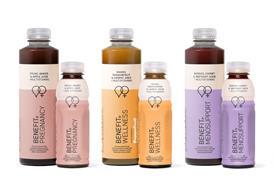





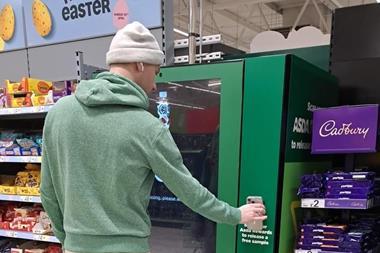

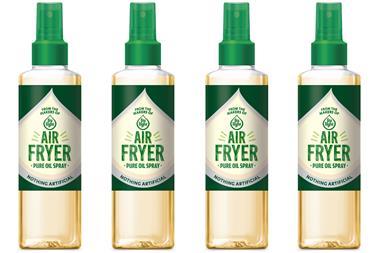
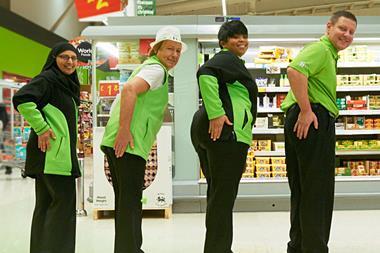
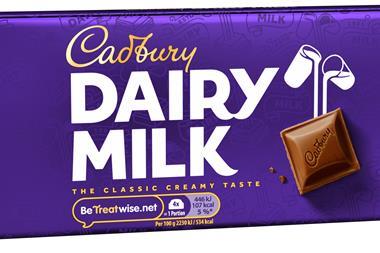
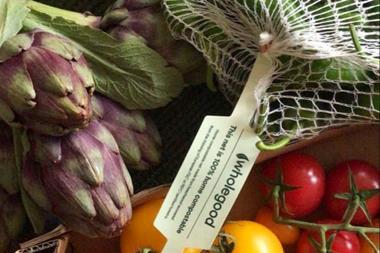



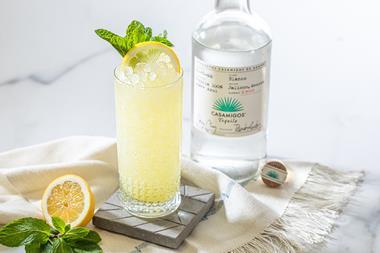
No comments yet